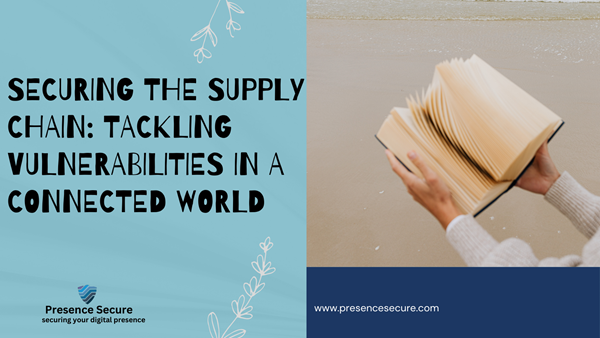Supply chain attacks are no longer a theoretical threat; they are a tangible risk that has already disrupted multinational corporations and government institutions alike. From compromised software updates to infected hardware and insecure partner networks, attackers are discovering new ways to infiltrate organizations – not through the front door, but through the side windows.
Businesses today depend on a wide array of third-party vendors, software providers, logistics firms, and IT partners to remain agile and competitive. While this interconnectedness boosts efficiency, it also creates a vast web of vulnerability – one that cybercriminals are increasingly targeting.
Take the infamous SolarWinds breach, for example. A trusted software update from a widely used IT management platform was compromised, affecting thousands of clients, including major U.S. government agencies. This sophisticated supply chain attack revealed a sobering truth: even the most secure organizations can be compromised if their suppliers are not equally vigilant.
So what does this mean for modern cybersecurity?
It underscores a vital lesson: an organization’s cybersecurity is only as strong as its weakest link in the supply chain. While companies may invest heavily in securing their internal systems, the overlooked risks often lie in the partners, software, and services they depend on.
Here’s how businesses can strengthen their supply chain defenses in a hyperconnected world:
- Conduct Rigorous Vendor Risk Assessments
Before onboarding a new vendor or supplier, organizations should carry out thorough cybersecurity due diligence. This includes reviewing the vendor’s security policies, compliance with standards like ISO 27001 or SOC 2, data handling procedures, and incident response plans.
- Implement Third-Party Risk Management Programs
Effective third-party risk management (TPRM) is not a one-time process—it’s an ongoing responsibility. Create a framework for continuously monitoring the cybersecurity posture of all vendors, especially those with access to sensitive data or systems. Automate assessments where possible and maintain open channels for communication.
- Enforce Supply Chain Security Contracts
Include clear cybersecurity expectations and requirements in supplier contracts. These should define responsibilities for breach notifications, data protection, audit rights, and compliance with relevant regulations. When accountability is legally bound, there’s a greater incentive for partners to adhere to best practices.
- Segment Network Access
Suppliers and vendors should only have access to what they need. Applying the principle of least privilege (PoLP) helps limit the scope of any breach that might originate from a third party. Network segmentation and access controls can significantly reduce lateral movement within a compromised environment.
- Monitor Software Integrity
Supply chain software – especially those integrated into critical operations-must be carefully monitored. Use tools that can verify the integrity of code and detect unauthorized changes. Employ digital signatures and cryptographic checks to ensure authenticity and reduce the risk of tampering.
- Develop an Incident Response Plan for Third-Party Breaches
Organizations must include third-party breaches in their incident response planning. This involves knowing how to contain, investigate, and communicate during a breach involving a vendor or external software provider. Having a protocol in place will shorten recovery time and mitigate fallout.
- Foster a Culture of Shared Responsibility
Cybersecurity is a shared effort. Encourage vendors to maintain strong cybersecurity practices and stay updated with threat intelligence. Engage them in security training, tabletop exercises, and collaborative audits to ensure alignment.
In conclusion, securing the supply chain is no longer optional – it’s essential. As attackers evolve and shift tactics, the boundaries of cybersecurity must extend beyond the physical and digital walls of your organization. The cost of ignoring supply chain vulnerabilities can be catastrophic: financial loss, reputational damage, legal consequences, and a breakdown of trust.
To stay resilient in this connected world, businesses must build strong, secure, and transparent relationships with their suppliers and partners. The future of cybersecurity depends not just on the strength of individual systems, but on the collective resilience of the entire network.

